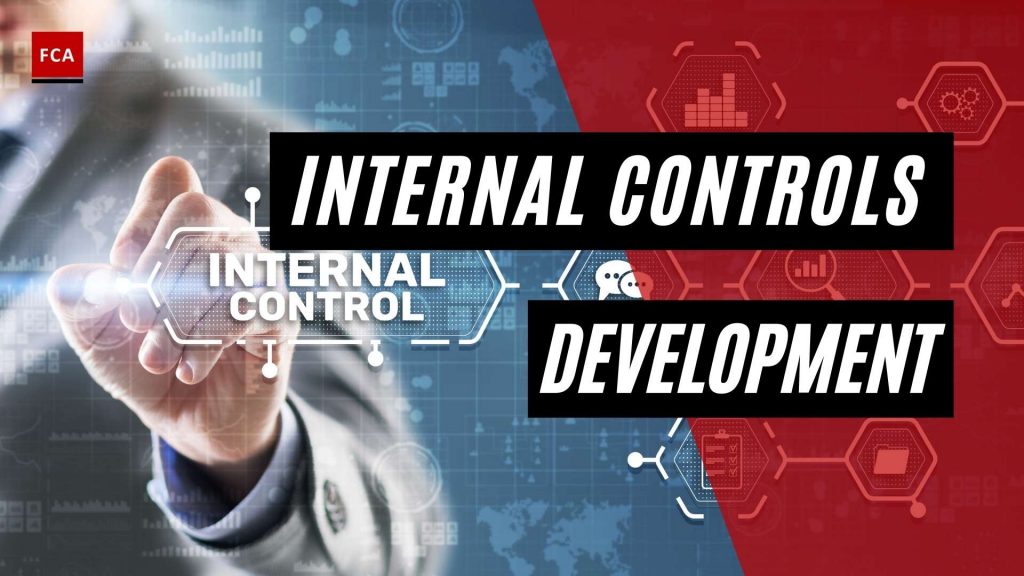Every organization has unique risks, challenges, and opportunities. Small entities may face a lesser number of challenges as compared to large corporate organizations. This article elaborates on ‘Key Considerations In Developing Internal Controls’.
Small entities usually run on a limited scale and have a small product range, simple operations, a limited customer base, simple processes, and limited use of technology and application systems. Smaller entities such as sole proprietorships are usually owner-managed where owners are directly involved in the daily execution of transactions as well as monitoring business operations and activities.
What are internal controls?
These are the mechanisms, rules and procedures implemented by a company to guarantee the integrity of financial and accounting information, promote accountability and prevent fraud
Besides compliance with laws and regulations and preventing employees from stealing assets or committing financial crimes, such as fraud, internal controls can help improve operational efficiency by improving the accuracy and timeliness of financial reporting.
Due to owner management, smaller entities require a simple business hierarchy and process, which can be managed by limited human resources. The focus of smaller entities is to increase the market share and reduce the costs of running the business.
On the other hand, large organizations or corporate entities are involved in manufacturing and providing a large number of products and services to diverse customers from different jurisdictions. Large organizations have diversified shareholding structures, complex business operations, dependency on a large number of skilled human resources, amd complex regulations and laws to comply with.
To operate on a large scale, the large organizations deploy specialized knowledge in the form of skilled human resources, technology, machinery, and large infrastructure. These factors cause business and its operations to be complex.
To remain competitive and in business, both small and large organizations have to design, develop and implement the relevant internal controls in the form of hierarchy, processes, policies, systems, and operating procedures.

Challenges
Challenges faced by these organizations can be categorized into two different types:
- internal challenges and
- external challenges
Internal Challenges
Internal challenges arise due to internal business processes and the environment of an organization such as human resource management, use of specific core application or information technology (IT) systems, dependency on technology, the complexity of business operations, complex ownership structure, diversified product range, and shareholders’ expectations.
External Challenges
External challenges faced by organizations may arise due to a large customer base with increased customer expectations, the pressure of maintaining market share, increased competition, and new ways of doing business. One of the important external factors which are considered by management and risk owners before developing internal controls is the applicable laws and regulations.
Using modern technology on businesses
Due to strong competition, new ways of doing business, digitalization, the use of cloud software and technologies, and complex business operations, the regulators of many organizations are issuing strict regulations. The board and management of these organizations must consider and understand the existing and new applicable laws and regulations.
To identify and understand such regulatory requirements and laws, there is a need for management to develop a dedicated compliance function. Developing a dedicated compliance function is control in itself to protect the overall compliance environment of the organizations. However, the board and management build strong compliance culture through hiring compliance experts to ensure regulatory compliance.
All internal and external factors are considered by senior management with the involvement of heads of compliance and risk-management functions to focus on addressing the need to develop and implement relevant internal controls. These challenges also necessitate the establishment and implementation of strong corporate governance and control culture at all levels within the organization to ensure the success and survival of the business and its operations.
A properly designed and strictly enforced system of internal controls helps an organization achieve business objectives, protecting its revenue stream, profitability, and assets from operational losses, frauds, and forgeries.
Integrated Approach to Risks Identification
Synchronization of departments and functions is an important aspect in the development of internal controls. This is because departments work in collaboration with each other to achieve overall business objectives.
When management plans to define internal controls, it must consider the interrelationship of the departmental process flows and associated risks. In other words, internal controls should not be developed in isolation.
To develop a robust internal control system for the business and operations of the organization, the board of directors and senior management define the business objectives and identify risks arising out of defined business objectives and targets. This is an integrated approach, where business objectives and strategies are linked with existing and emerging risks to design and develop the controls, which mitigates the identified business risks. In an integrated approach of risk identification and controls development, all the departments and functions collaborate to bring transparency in identifying risk issues and internal controls. Such an integrated approach ensures defining risk ownerships and accountabilities related to risk owners.
Final Thoughts
Internal controls plays a huge part in preventing employees from stealing assets or committing financial crimes, such as fraud, internal controls can help improve operational efficiency by improving the accuracy and timeliness of financial reporting. This article elaborates on ‘Key Considerations In Developing Internal Controls’.









